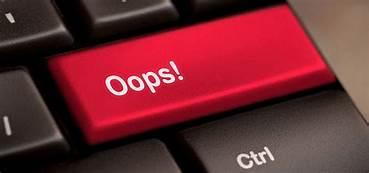Email Without Regret
 Communicating effectively is an essential skill in everything we do. There is virtually nothing a leader does that doesn’t include communication and isn’t more effective or easier with effective communication skills. It is the key to our success—personally and professionally. Technology—and circumstances—has changed how we communicate over the past several years and particularly over the past two years. Email in particular has its own set of challenges.
Communicating effectively is an essential skill in everything we do. There is virtually nothing a leader does that doesn’t include communication and isn’t more effective or easier with effective communication skills. It is the key to our success—personally and professionally. Technology—and circumstances—has changed how we communicate over the past several years and particularly over the past two years. Email in particular has its own set of challenges.
There are some rules of email etiquette that, if you stick to them, will keep your emails professional, and not give you cause for regret.
- Include a clear, direct subject line—People may decide whether to open your email based on the subject. Choose one that let’s the reader know that the email is something of importance to them.
- Stick to a professional email—Don’t use a personal email if you can avoid it. If you do have to use a personal email, make sure your email address is appropriate for work communications.
- Think twice before hitting “Reply All” or CC’ing everyone—No one wants 20 emails that don’t apply to them, or are a brief “thank you”. Unless your reply really needs to go to everyone, just reply to the original sender and let them decide if everyone needs to see it. A good rule of thumb is to only copy those people what would be invited to an actual meeting on the topic.
- Use a signature block—This provides information about you and how to contact you. Keep it consistent with the mission and values of your organization. The signature block of a work email is not a vehicle for personal priorities or concerns.
- Reply to an email even if it wasn’t meant for you—Let the person know that they may have sent it in error so they can correct the situation. And assure them that you will delete the email immediately.
- Always respond in a timely manner—This usually means within 24 hours, even if it is to acknowledge that your received it and will get back to them in more detail within a defined time.
- Proofread every message—Auto correct can be deadly—and embarrassing. Read and re-read every message before sending.
Here are also some tips for avoiding email disasters. We’ve all had them, but they can be avoided with a little forethought:
- Be cautious with humor—Humor can be easily lost in translation without the benefit of vocal tone or facial expressions. Something that may be funny in person can come across very differently in an email. Without the visual cues of how the reader received the joke, you won’t have the ability to try to correct any miscommunication or offense.
- Assume that nothing is confidential—Every electronic message leaves a trail. Assume that others will see what you have written. Don’t put anything in an email that will be ruinous to you or hurtful to others
- Observe the 24-hour rule—When feeling frustrated or angry, expressing our feelings in an email can make us feel better. However, that good feeling is often short-lived and can wind up as regret for having sent it. Go ahead and write the email (leave the address out), save it in your drafts, and revisit it in 24 hours. This gives you a chance to cool down and rewrite or edit it in a way that is more productive and the kind of message for which you want to be remembered.
- People on-line are still people—Without the feedback of face-to-face communication, it becomes easier to not worry as much about offending people on-line. This is called the disinhibition effect. Since we don’t have to experience the discomfort of watching the reader’s response, we may tend to say things we might refrain from saying in person. Try to visualize the person you are sending the email to and how they will react when they read it.
- Know when on-line needs to be off-line—Significant, lengthy, or heated email exchanges are best taken off-line and finished in person. Things like disciplinary action, delivering bad news, difficult conversations, team building, and brainstorming are almost always best done in-person whenever possible.
Although useful for speed and efficiency, email should not be your primary source for creating and maintaining relationships. Always consider the best form of communication for what you are hoping to accomplish. If it is email, then try to take the time to consider how things will look from the reader’s perspective before you hit send.
